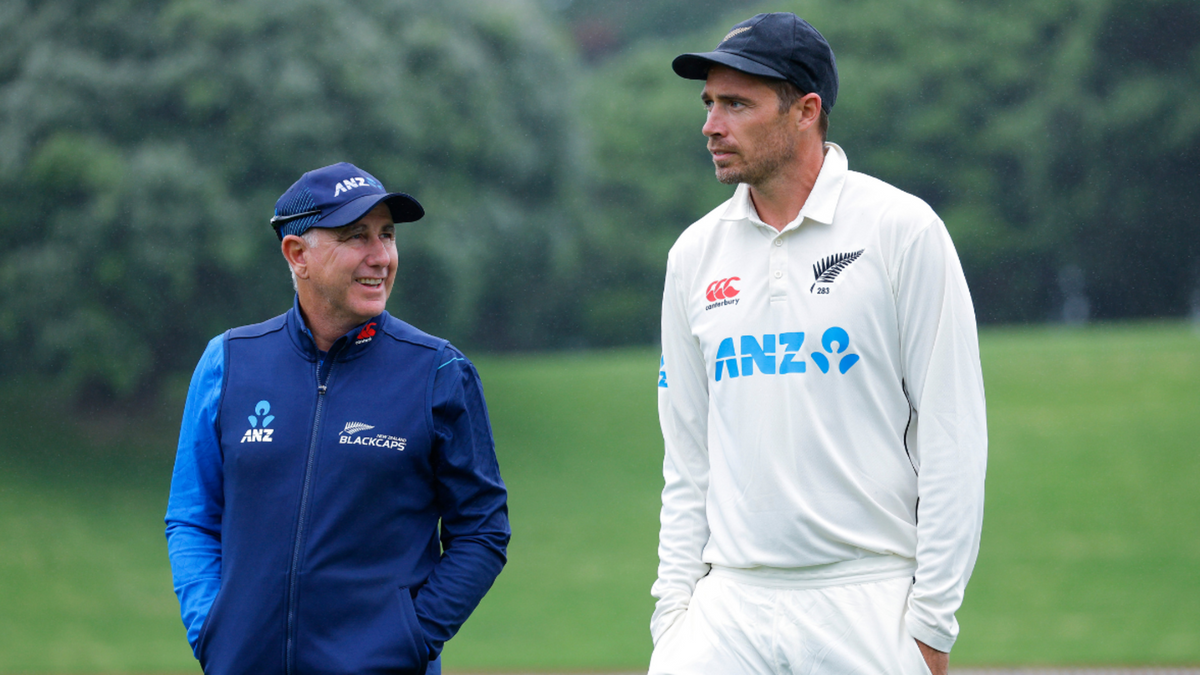
New Zealand have suffered a significant performance dip in form since they were crowned World Test Champions less than two years ago.
On top of the world after defeating India in Southampton, they now sit eighth out of nine in the current cycle after a damaging home defeat to England in the first Test match.
Since the final in Southampton, they have had to deal with the retirements of Ross Taylor, BJ Watling and Colin de Grandhomme. They have also had to contend with a drop off in Trent Boult’s appearances in a Test shirt given his non-contracted status. All of this in consideration, New Zealand are in a significant transition period.
As is commonplace for the Blacks Caps, they appeared to have replacements for at least two of those losses. Tom Blundell, who took his Test average up to 44.20 at Mount Maunganui with his fourth century in 23 matches, replaced BJ Watling behind the stumps. While Daryl Mitchell, who has four centuries at an average of 58.27, fortified the middle order and can bowl some medium pace to alleviate the load on the specialist pacers.
The remarkable ability New Zealand have to punch above their weight and continue to produce exceptional cricketers as a country with more with a famously small population was at some point going to come unstuck. The first Test against England showed their bowling depth is lacking, with Boult, Matt Henry and Kyle Jamieson all absent for differing reasons. That thinning bowling attack, which was so central to making the Kiwis strong at home, has lost some of its potency.
In the last cycle they out-bowled every team that visited and were unbeaten at home. This included taking 40 wickets in a two-match series against India. In that series, India’s an attack containing Jasprit Bumrah, Mohammed Shami, Ishant Sharma and Ravichandran Ashwin mustered just 23.
They similarly beat the West Indies 40 to 17 in wickets and 40 to 21 against Pakistan who had all three of Shaheen Shah Afridi, Mohammed Abbas and Naseem Shah.
In this Test Championship cycle, they have now lost three of their five home Tests so far. This included against Bangladesh last year, who out-played New Zealand in both departments in the first Test, but most importantly took 20 wickets compared to the 12 New Zealand managed in the match.
Tim Southee will welcome the return of Matt Henry to their side for the second Test against England, the right-armer has 18 wickets in his last four Tests and provides Southee with more experience in his ranks than he had at his disposal in Tauranga.
Away from home they have had tough assignments. They started with India who have dismantled every visiting team they have come up against, and more recently they struggled to find the firepower to force results on docile pitches in Pakistan.
Significantly they have played a rejuvenated England four times, including once at home, and have lost them all. They witnessed the birth of Bazball in much the same way as they were the first to experience Eoin Morgan’s white-ball revolution eight years ago.
Mitchell explained the downturn in results after the first test, saying: “we are missing a couple of small moments now.”
Sometimes Test cricket is exactly that, when a team is in good form, they tend to take the initiative at the right time and the Kiwis have lost the canny knack of picking their moments well that took them to the top of the rankings in 2021.
It might be that the squad is aging, only last week’s debutant Blair Tickner, 29, and Jacob Duffy, 28, are below 30 in their current squad. With an already small talent pool, it does not seem like there are many youngsters knocking on the door for selection.
In addition, the performances from their established names are starting to diminish slightly. Kane Williamson will certainly go down as one of New Zealand’s finest-ever batters but has suffered with injury, poor form and has now given up the Test captaincy. He scored a double century against Pakistan in Karachi just four innings ago and New Zealand will hope relinquishing the captaincy will signal a return in his batting consistency.
The composition of the side now seems to leave them a batter short from when they were world-beaters. Mitchell, who has shown himself to be a fine Test batter seems to have filled a hole left by both Taylor and de Grandhomme – papering over a gap slightly too big for him.
Michael Bracewell has proved his worth with the bat with some ridiculous knocks in international white-ball cricket, but with him at seven the batting dissipates quickly afterwards.
The form of Henry Nicholls is far from helpful in solving this batting dilemma. Nicholls, a usually reliable option in the top order, averages 21.21 in his last 11 test matches. The concern is who could replace him, with Will Young the spare batter in the squad averaging less than 30 in his career to date.
New Zealand look like a team with many questions to answer. While their opponents England are the complete antithesis to that. Backing their current players to the hilt and with a clear plan and set roles in place, they are two teams at very different points in their journeys.








